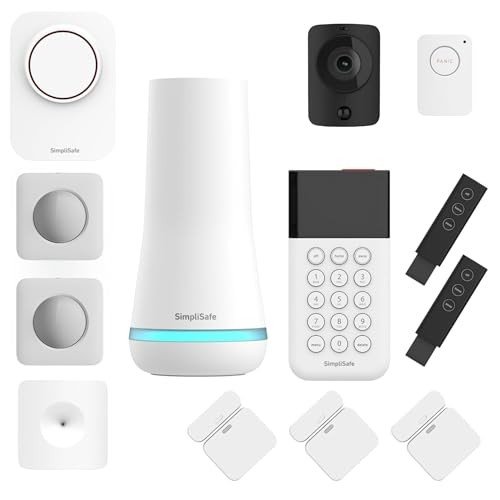Contemporary Lighting in the UK: Transforming Spaces with Illumination
Lighting plays an important function in specifying the atmosphere and performance of any space. In the UK, contemporary lighting has become a significant design element, providing ingenious solutions that mix aesthetics with functionality. This short article dives into the various styles, products, and innovations shaping contemporary lighting, together with tips for choosing the most suitable fixtures for numerous settings.
The Evolution of Contemporary Lighting
Contemporary lighting in the UK shows the altering tastes and technological developments in style. It encapsulates a broad range of styles, including:
- Minimalist: Characterized by simplicity and clean lines, minimalist lighting fixtures concentrate on form and function without unnecessary decorations.
- Industrial: Inspired by city settings, industrial lighting combines raw materials like metals and woods with vibrant styles, creating edgy, practical pieces.
- Scandinavian: Known for its heat and simpleness, Scandinavian lighting frequently includes soft colors and natural products, focusing on creating a relaxing atmosphere.
- Smart Lighting: This modern trend integrates technology with style, permitting users to manage their lighting with mobile apps, voice commands, or automation systems.
To illustrate the development and variety in the field of contemporary lighting, think about the table listed below, which highlights key qualities of various designs.
| Style | Secret Characteristics | Popular Materials | Suitable Spaces |
|---|---|---|---|
| Minimalist | Easy, functional styles | Metal, glass, wood | Modern homes, offices |
| Industrial | Raw, incomplete appearance | Steel, concrete, wood | Lofts, galleries |
| Scandinavian | Comfortable, warm visual appeals | Natural fibers, light wood | Living rooms, coffee shops |
| Smart | Integrated innovation, automation | Varies commonly | Residences, offices, retail areas |
Selecting Contemporary Lighting Fixtures
Picking the ideal lighting fixtures for an area requires cautious consideration of numerous elements. Here are crucial elements to bear in mind:
1. Purpose of the Space
Before choosing fixtures, consider the desired usage of the area. Different functions need various types of lighting:
- Task Lighting: Focused illumination for activities such as reading, cooking, or studying. Examples consist of table lamps and under-cabinet lights.
- Ambient Lighting: General lighting that supplies general lighting. Ceiling lights and pendant fixtures fall under this category.
- Accent Lighting: Designed to highlight specific functions or areas, such as art work or architectural information. Wall sconces and track lighting are common choices.
2. Style and Theme
The lighting must complement the existing design. Choose fixtures that match or enhance the total style of the area, whether it's contemporary, rustic, or diverse.
3. Size and Scale
Consider the proportion of the lighting fixtures relative to the space. A big chandelier might look spectacular above a roomy dining table, while smaller sized pendant lights work well in compact settings.
4. Energy Efficiency
With increasing energy costs and environmental issues, selecting energy-efficient lighting alternatives is important. LED lights are an excellent choice, using durability and lower energy consumption.
5. Flexibility
In modern style, adaptability is key. Fixtures that can be changed or rearranged enhance performance, permitting users to produce different environments as needed.
Popular Contemporary Lighting Brands in the UK
The contemporary lighting market in the UK boasts various brands known for their ingenious designs and quality workmanship. Some significant discusses consist of:
- FLOS: An Italian brand name celebrated for its creative and iconic light fixtures that frequently function as pieces of art.
- Tom Dixon: A British designer acknowledged for his modern, industrial styles that magnificently include metal and light.
- Anglepoise: Known for its flexible, functional lamps, best for a variety of settings from office to creative studios.
- John Lewis: Offers a range of contemporary lighting services that accommodate a broader audience, including affordable yet trendy choices.
Frequently Asked Questions about Contemporary Lighting in the UK
1. What is contemporary lighting?
Contemporary lighting describes lighting designs and fixtures that show present design patterns, typically characterized by tidy lines, innovative shapes, and using modern products and innovations.
2. How do I select the right lighting for my home?
Think about the purpose of the room, existing design, size of fixtures, energy performance, and flexibility. Evaluate how look at this website will add to the overall atmosphere and performance of your area.
3. What are some energy-efficient lighting choices offered in the UK?
LED lights are the most popular energy-efficient option, understood for their long life-span and low energy consumption. Floor Lamps UK (CFLs) and halogen bulbs are other alternatives.
4. Where can I shop for contemporary lighting in the UK?
Contemporary lighting can be found in various retail outlets, both online and in physical stores. Notable retailers include John Lewis, Habitat, and specialized lighting shops.
5. Can contemporary lighting operate in traditional spaces?
Definitely! Contemporary lighting can improve traditional areas when chosen thoughtfully. Choosing fixtures with a balance between modern and timeless components can create an unified design.
Contemporary lighting in the UK represents more than just illumination; it embodies design innovation and imagination, changing areas and improving performance. As patterns continue to develop, property owners and designers alike can check out an extensive variety of designs and technologies, guaranteeing that every room bursts with life, heat, and character. By considering the necessary factors detailed in this article, one can curate a collection of lighting fixtures that resonates with individual style and satisfies practical needs, eventually forming comfortable and aesthetically appealing environments.

